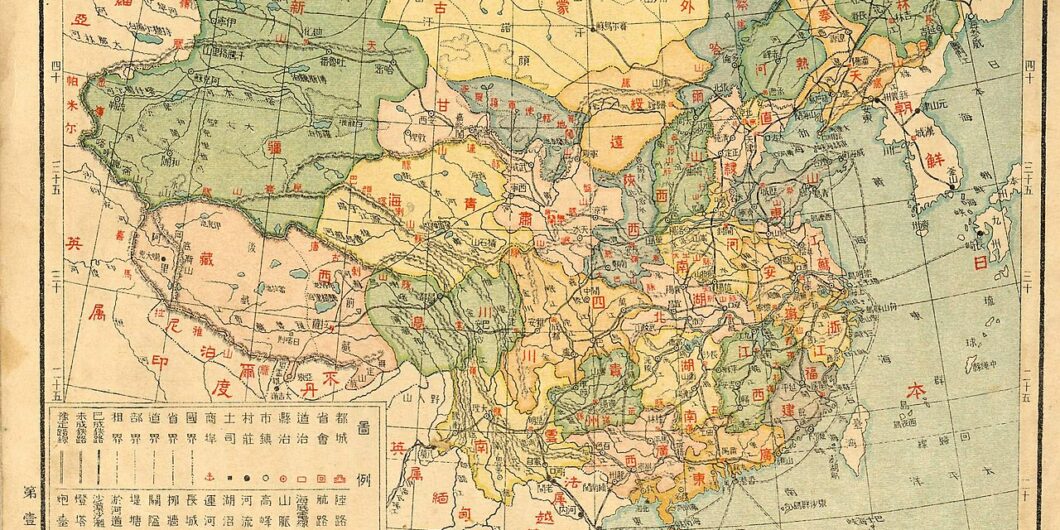One to Rule Them All
After the death of Mao Zedong, the Chinese Communist Party (CCP) led by Deng Xiaoping introduced reforms intended to put a brake on the centralized political power in China. Those reforms featured fixed terms of office, term limits, a mandatory retirement age, and the delegation of power from the CCP to government agencies and other party institutions including the Congress of Party Deputies. These measures were adopted to institutionalize collective leadership, create a peaceful process for succession of leadership, and prevent the rise of a single political strongman.
In his new book, Xi Jinping: The Hidden Agendas of China’s Ruler for Life, Willy Lam describes in detail how Xi has purposefully and methodically undone those reforms, amassed nearly unchecked power, and gained the fealty of the CCP in ways not seen since the days of Mao. Lam also details what Xi wants to achieve by wielding nearly unrivaled power over virtually all aspects of the Chinese state, economy, and society. That’s why this book makes for compelling and sobering reading for general readers, academics, policymakers, and anyone seeking insight into the future of China and that country’s now fraught relationship with the West.
Lam is a Senior Fellow at the Jamestown Foundation. A journalist, editor, political commentator, and political scientist, Lam has been writing about China for more than 40 years. For decades, he was a fixture at the South China Morning Post. He served as the paper’s Beijing correspondent until the 1989 Tiananmen Square Protests and as the China editor during the handover of Hong Kong in 1997. Lam left the Post in 2000 to protest growing editorial censorship. Now as a frequent commentator on major news networks, including CNN, Lam is well-regarded today as both an informed and insightful China watcher.
“Retrogression” of Reform
Lam explains how the limited ideological and political reforms introduced by Deng and other party leaders who came after Mao “were geared towards the goal of cautious de-dogmatization under the context of one-party dictatorship” and of opening China to a world market economy. As the son of first cadre Chinese Communist revolutionary Xi Zhongxun—who was jailed and then exiled during Mao’s Cultural Revolution—Xi might have been expected to embrace reformist policies. But Lam notes that Xi’s surprising rise from “a relatively low-level provincial administrator” was not marked by any significant achievements in either economics or politics, or for groundbreaking theories and ideas for either domestic or foreign policy. Instead, the author argues, Xi simply “re-embraced the dictums” of Mao and “has re-postulated ultra-conservative ideas to the effect that un-alloyed Marxist values should be preserved even as ‘dangerous’ Western ideas should be banished.”
Lam also describes how Xi has reconstituted many of the mechanisms Mao had used to consolidate power inside his authorities. Xi has enlarged his power and reach as General Secretary and leader of the party by revising the CCP constitution to fill the Central Committee, the Politburo, and the Politburo Standing Committee (PBSC) with members of the Xi Jinping Faction (XJPF) of the party. “The most obvious power-grabbing convention is that the six other members of the PBSC must periodically report to the general secretary,” instead of the other way around. In so doing, Lam argues, Xi has sidelined liberal and decentralizing elements within the CCP, cleansed the party hierarchy of dissenting views, and marginalized rival cliques and factions that would challenge newly re-enshrined Maoist orthodoxies.
Lam contends that Xi’s position as “China’s supreme leader for life,” was cemented by his 2022 re-election to a third consecutive five-year term as General Secretary of the CCP. Xi had used his XJPF majority to change the party constitution and abolish term limits and mandatory retirement rules. More tellingly, Lam notes that Xi has failed to appoint a successor or even groom an apprentice. Instead, he has “spurned … a transparent and orderly succession process” and ensured that no one “will challenge his all-but-unannounced intention of ruling at least until the 22nd Party Congress in 2032.”
The state is making use of advanced AI to monitor media, academia, business ventures, the internet, and the CCTVs installed by edict in China’s remaining authorized religious institutions.
Xi’s Agenda
At the heart of Lam’s deliberative assessments in Xi Jinping is a sound discussion of the Supreme Leader’s agenda. Lam presents four chapters that demonstrate how Xi is pursuing a plan to remake Chinese socialist ideology, deepen the reach and power of the surveillance state, enhance the party’s control over the Chinese economy, and establish a new set of international norms of behavior and Sino-centric world order. The chapters that detail Xi’s agenda are well-organized, feature keen insights, and offer sobering judgments. In each, the author’s criticism of Xi’s agenda is illustrative and incisive.
For example, Xi has repeatedly cited in his speeches and published writings (of which a new booklet is produced nearly every month) the need to make a renewed commitment to Marxism by adopting socialism with Chinese characteristics. Lam neatly picks apart Xi’s embrace of dogmatic socialism. He excoriates the “dubious” Marxist content of Xi’s political thought and assesses his political theory as “a hodge-podge of ethereal ideas drawn from different traditions” including Confucianism, the Legalist School of ancient China, Marxism, Leninism, nationalism, and the dream of a rejuvenated Middle Kingdom.
Even so, to ensure there is no deviation from “Xi Jinping’s Thoughts on Socialism with Chinese Characteristics for a New Era,” Xi has built and buttressed a massive surveillance state in China. This, according to Lam, is now a vast apparatus of cameras, informants who spy on their co-workers and neighbors, and overseas “police stations” with watchers who monitor Chinese citizens abroad and even the citizens of other nations who are critical of China. The state is also making use of advanced AI to monitor media, academia, business ventures, and the internet (even behind the Great Firewall of China)—policed by a force of some two million government agents—and the CCTVs installed by edict in China’s remaining authorized religious institutions.
The author notes that Xi himself is chairman of China’s powerful Central National Security System and the Central Cyberspace Affairs Commission. These are just two of the state institutions now controlled by Xi that were previously headed by other members of the Politburo. Xi, Lam observes, is now “Chairman of Everything.” He is General Secretary of the Party, President of China, chairman of the Central Military Commission, and has appointed his protégés in the XJPF to administer the military, the economy, security, foreign relations, and communications. But Lam also notes that Xi’s lackluster appointees “were either regional ‘warlords’ or party apparatchiks with no experience in hands-on policymaking and policy execution in areas including the economy, international trade and investment, socio-economic development, public health, and the environment.”
Waning Trust
Lam displays an encyclopedic knowledge of Xi’s appointees and of the administrators of the institutions that manage the PRC. While much of his extensive research—there are more than 700 footnotes to the text—is drawn from secondary sources, Lam is at his best when he provides both context and analysis for the workings of these institutions and the fallout from their failings. In the chapter on Xi’s economic agenda, for example, he offers a far-reaching analysis that discusses the lack of market reforms, the deleterious primacy of state-owned enterprises, China’s faltering tech industries, and the country’s crisis in its real estate and banking sectors.
According to Lam, the CCP’s implicit bargain with the Chinese people proffers stability, prosperity, and harmony, in return for allegiance to the party-state and its leader. The author points to the souring economy, Xi’s failed draconian “zero tolerance” COVID policy, the collapse of the highly leveraged housing market, growing unemployment, endemic corruption, and friction with the international community as among the reasons why “repeated failures by the regime … have resulted in a huge crisis of trust” among the 1.3 billion Chinese who are not members of the party.
The years 2021 and 2022 would go down in history as the wholesale loss of trust ordinary citizens have in the party-state system. The originally fragile social contract between the rulers and their charges is being sundered. The handling of the pandemic has hurt all sectors of the population . . . Those who have spent their lives’ savings . . . for unfinished apartments were told . . . their buildings would not be finished for lack of funds. Customers in official banks cannot take out their money. Almost all rules and regulations have broken down.
Lam argues that one-man rule and party-state dominance have left Beijing with few measures to contend with the country’s mounting socio-economic challenges. He also makes it clear Xi “would never borrow values or governance systems from capitalist laissez-faire countries.” So instead, Lam writes, Xi has abandoned liberalization and doubled down on “reinstating the norms and standards of the Mao Zedong years” to ensure the stability of the socialist state and the primacy of the party. The overriding objective of preserving the party-state is coupled with renewed exhortations to douzheng, or to struggle against enemies both at home and abroad.
This amounts to a “scorched earth policy” implemented “to bolster the surveillance state and the strength of an unchallengeable leader” that will likely “wreak havoc on whatever ideas and trusts people still have in the system.” Xi’s unceasing efforts to bolster the party-state, Lam explains, are ineluctably yoked to one man’s control of the economy, politics, society, and especially “the minds of all Chinese.” In the end, Xi Jinping: The Hidden Agendas of China’s Ruler for Life is a well-written and thoughtfully reasoned chronicle of this one-man rule in China and the story of a modern China “that seems to be pivoting itself to the wrong side of history.”


